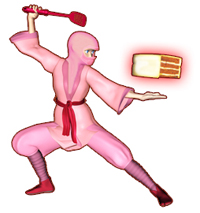Traveling Gluten-Free in Japan
So you’re heading to the Land of the Rising Sun. Japan, where gluten-free rice reigns supreme.
Easy peasy gluten-free. Right? Depends if you’re a glass half full or empty sort of person.
Let’s start with sushi:
- Fresh fish is fine.
- Japanese sticky rice is gluten-free (and absolutely delicious!)
- Miso soup is served with most Japanese restaurant meals. Miso is sometimes gluten-free. (Miso is made of fermented beans – soybeans, azuki beans, and chickpeas. Millet, rice and quinoa are used in the process. That’s fine. But, barley, wheat and rye are also used.)
- Soy sauce is mostly wheat based in Japan. Solution? Bring small packets of Tamari.
- OR If you are traveling in Central Japan (the Chuubu district) or Nagoya, you are in Tamari territory.
- The star of hot wasabi paste is a root. Nonetheless, it is often mixed with wheat.
- Dashi soup – when homemade with bonito flakes and konbu kelp and water you’re all right. In other circumstances, present the card below.

Be Aware of:
“Crab”
Stay away from anything resembling crab unless you are 100% certain it’s the real thing. Fake crab is crawling with wheat. It’s seen in onigiri and Japanese bento lunch boxes.
“Buckwheat noodles”
Japanese restaurants may advertise buckwheat noodles on the menu. Nice if the noodles were made entirely of buckwheat. However, to keep costs down, most soba noodles contain some wheat.
“Tare Sauce”
Tare is a sauce commonly slathered atop skewered chicken (yakitori.)

Good News Protein:
*Yakitori: Skewered, grilled chicken without tare sauce is gluten-free. Ask for shio (salt) to flavor the chicken. (Refuse Aji-no-Moto that looks like salt but is not gluten-free.)
*Hard boiled eggs: Readily available in conbini (7-11 style) convenience stores.
Steamed “edamame” soybeans: If boiled in anything else; you’ve got it, present the card below.
Good News Snacks:
- Soyjoy sports bars
- Potatoes Satsuma imo or yaki-imo
- Roasted chestnuts (kuri)
- Daifuku sweets (Azuki beans are wrapped in pounded rice. Traditionally, the treats are dusted with rice flour or arrowroot flour.
- Mochi (pounded rice): Dunk in Tamari and wrap in nori seaweed.

Onigiri Rice Balls are Inexpensive Gluten-Free Lifesavers:
Rice Balls (onigiri) are wrapped in gluten-free seaweed. Stick to plum pickle, salmon or other standard fillings. (When in doubt, present the card below to the shopkeeper.)

Wishing you a great gluten-free holiday in Japan.
|
The Ninja Baker
© ™ Watkinson 2012 |
The Ninja Baker has guest blogged and contributed recipes to numerous food sites. These additional recipes can be found here.
|
|


